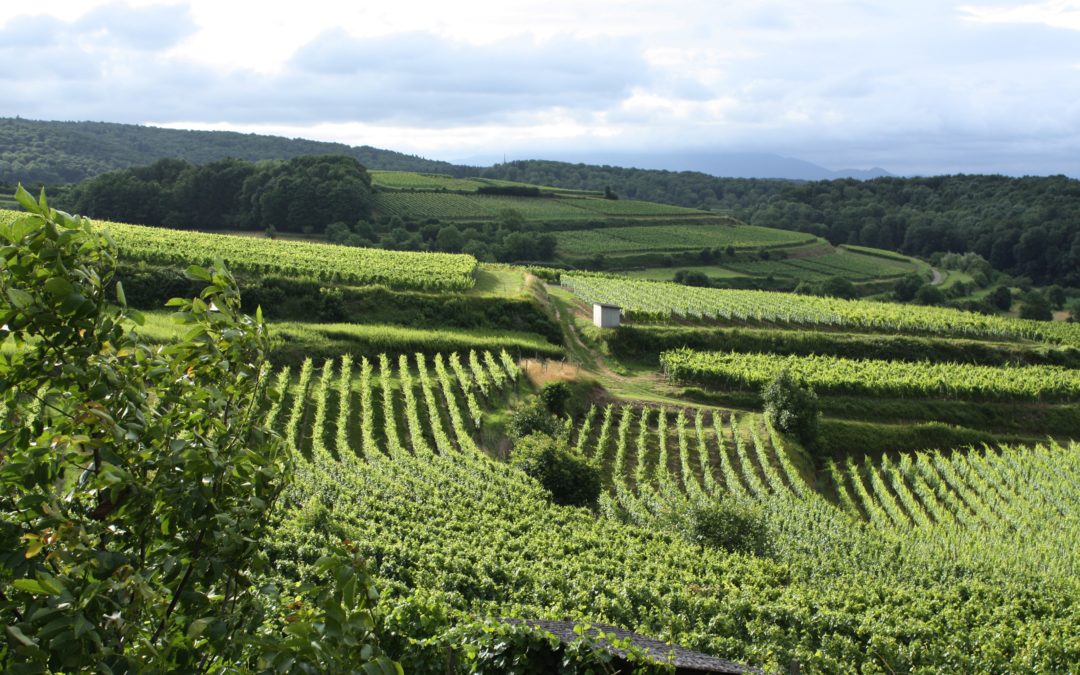
by Lorri | Jun 27, 2018 | UnCorked
As you know I am a big fan of Riesling.
The most celebrated examples of Riesling grow along the winding Mosel River. The Mosel begins in the Vosges Mountains in eastern France and flows northeast across Luxembourg and into Germany where it twists and turns — quite sharply at times — for 150 miles to Koblenz where it joins the Rhine.
The Mosel Valley is Germany’s third largest wine region, producing approximately 12 varietals with Riesling making up 60 percent of production.
The classification of the wines of the Mosel is important. There are three classifications to look for: Qualitatswein (QbA), Pradikatswein and Verband Deutscher Pradikatsweinguter (VDP).
QbA wines are those produced meeting a minimum ripeness level. This classification includes many everyday Rieslings (and today’s Value and Splurge).
Pradikatswein bases quality on the number of grapes affected by noble rot and the ripeness levels. This classification ranges from Kabinett (a dry wine) to the highest end of the sweet wines of the region, Trockenbeerenauslese.
VDP is an association of wine estates that classifies wines according to terroir.
It’s important to keep in mind these classifications are not a ranking of quality but refer to the ripeness level of the grapes. Because the region has traditionally been so cool, ripeness has been the determining factor of wine quality.
The Mosel Valley is one of the most northern latitudes (50th parallel) for growing grapes. Knowing the vineyard is situated to get the maximum hours of sunshine is key in selecting quality wine. When you see photos of the Mosel vineyards, chances are they are nestled along the river on steep slopes. This is very important because the areas facing south receive up to 10 times more sunlight during the growing season than north facing plots.
Soil is an another contributing factor. The slate soils offer good drainage during the wet growing season, but more importantly the slate holds the daytime heat and radiates it back to the vines.
Understanding these concepts and being able to put them to use is easier said than done.
It helps to know, many German wine labels use the same layout: Producer or bottler on the top line, followed by the vintage, then the name of the village and vineyard where the wine was produced, the grape varietal and finally the quality classification — Deutscher wein, landwein, Qualitatswein and Pradikatswein. Pradikatswein is further identified as kabinett, spatlese, auslese, beerenauslese, eiswein, trockenbeerenauslese. The VDP designation, if any, is usually found on the bottle neck.
THE VALUE
- 2016 Clean Slate Mosel Riesling, Germany (about $12 retail)
THE SPLURGE
- 2016 Rudi Wiest Select Mosel Riesling, Germany (about $16 retail)
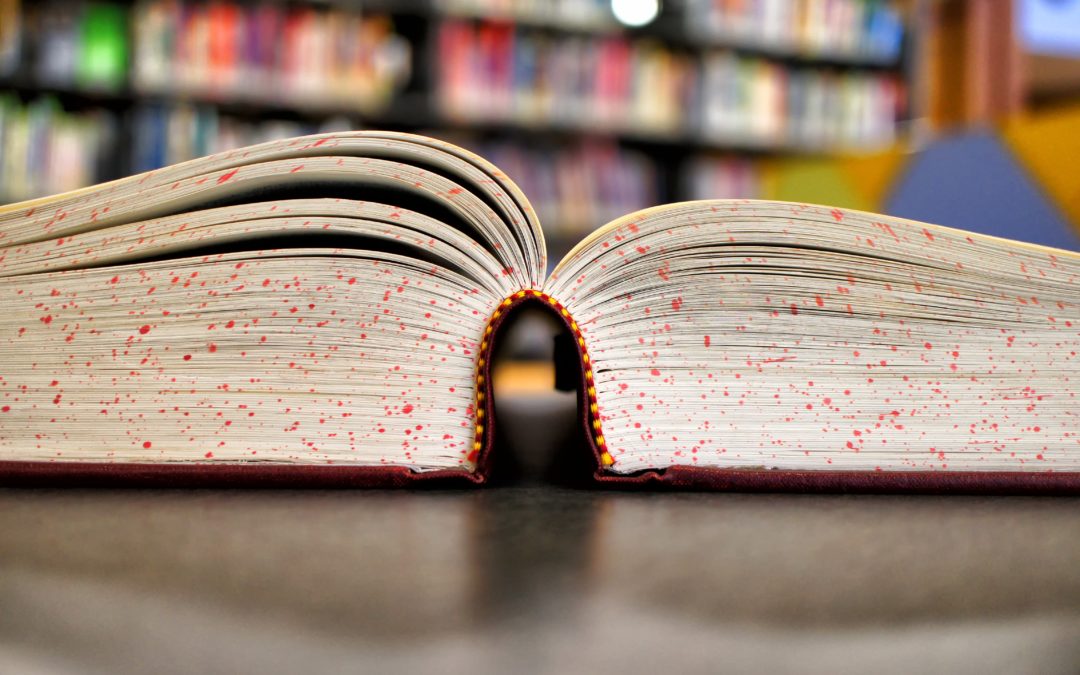
by Lorri | Jun 20, 2018 | UnCorked
As much as I love tasting new wines, you may be surprised to know I am more passionate about learning about wine than actually drinking the wines. Each time I research wine I come across many wine trivia facts. I hope you enjoy this week’s column filled with great dinner conversation, party trivia and just a few facts you may not have known.
- The world’s oldest bottle of wine, known as the Speyer wine bottle or Romerwein aus Speyer, dates to A.D. 325 and is on display in the Historical Museum of Palatinate in Speyer, Germany.
- There is a law about wine given in the Code of Hammurabi (c. 1800 B.C). “If outlaws collect in the house of a wine-seller, and she do not arrest those outlaws and bring them to the palace, that wine-seller shall be put to death.” (109)
- In Australia, wine labels are required to list the number of servings based on the alcohol content. For example, a bottle of Riesling with 8 percent alcohol by volume has 4.7 servings while a bottle of shiraz with 15 percent alcohol by volume has 8.9 servings per bottle.
- It takes between three and 10 bunches of grapes to make a bottle of wine, with most bottles requiring about five. A standard wine barrel contains about 295 bottles.
- The word “sommelier” is an old French word meaning butler or an officer in charge of provisions, derived from the Old Provencal “saumalier,” or pack animal driver.
- In Vietnam, you can order a glass of “snake wine” made with the venom from the cobra. It is usually served as a shot of rice wine covered with snake blood. Many times, the snake is killed as you order. It’s considered to have medicinal properties. Bottled snake wine — bottles of rice wine or grain alcohol — steeped with whole snakes inside are also available.
- The average age of a French oak tree harvested for the use of creating wine barrels is 170 years old. Mature trees have a tight grain ideal for barrel usage. Depending on the size of the tree and the size of the barrels, a cooper can make just one to three barrels from a single oak tree. However, the barrels can be used multiple times depending on the type of spirit and if they are being used to impart specific characteristics or simply for storage.
- Winemaking is a significant theme in one of the oldest literary works known, the Epic of Gilgamesh. The divinity in charge of the wine was the goddess Siduri.
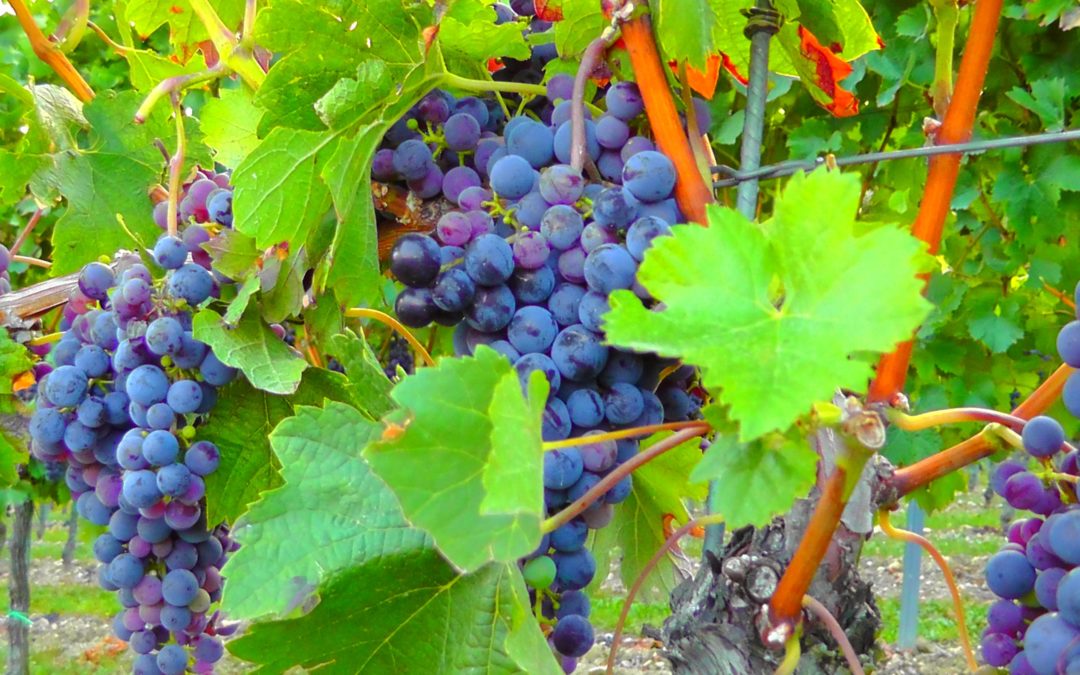
by Lorri | Jun 13, 2018 | UnCorked
A common refrain from readers: “I really enjoy sweet wines, but not too sweet.”
It’s a statement I value because many wine drinkers enjoy wines with some detection of sweetness. Knowing what makes some wines sweeter than others and the levels of sweetness help in understanding why we enjoy some wines over others.
A wine’s sweetness is measured in terms of residual sugar. It’s the level of natural grape sugar left after fermentation. Once the grapes are crushed they feed on the grapes’ sugars to produce alcohol and carbon dioxide. There is usually a small amount of sugar left in the fermentation process in all wines, regardless of yeast or varietal. The industry considers those having less than 2 grams of sugar per liter dry. (There are other methods of production to achieve sweet wines such as port, sauternes, ice wine.)
Many people confuse “dry” and “sweet” when trying to explain the characteristics. The most common misconception for a dry wine is that it will “dry” out your mouth when tasting. This sensation has nothing to do with sweetness. When wines create the dry sensation in the mouth, it is usually a detection of tannin levels and not caused by being dry. Dry refers to wines that are not sweet. Sweet wines are a little easier in descriptions; the wine will generally have a taste of sweetness on the tip of your tongue.
Technical sheets from your favorite wineries, often available online, will generally list the sugar levels in a wine. But in my years of tasting wines I have found there are many variables in your perceived tasting if a wine is sweet or dry. The most important to me is the acidity — the Granny Smith apple reaction you have on your palate. If the wine has high acidity it can still have a high sugar content, but you don’t notice the sugar and sweetness.
My best advice: When you find a wine with the sweetness level you enjoy, give the name and brand to your liquor retailer. He or she can guide you on similar sweetness levels in other wines.
THE VALUE
- 2016 Clean Slate Riesling, Germany (about $12 retail)
THE SPLURGE
- 2013 Bockstein Riesling, Germany (about $32 retail)
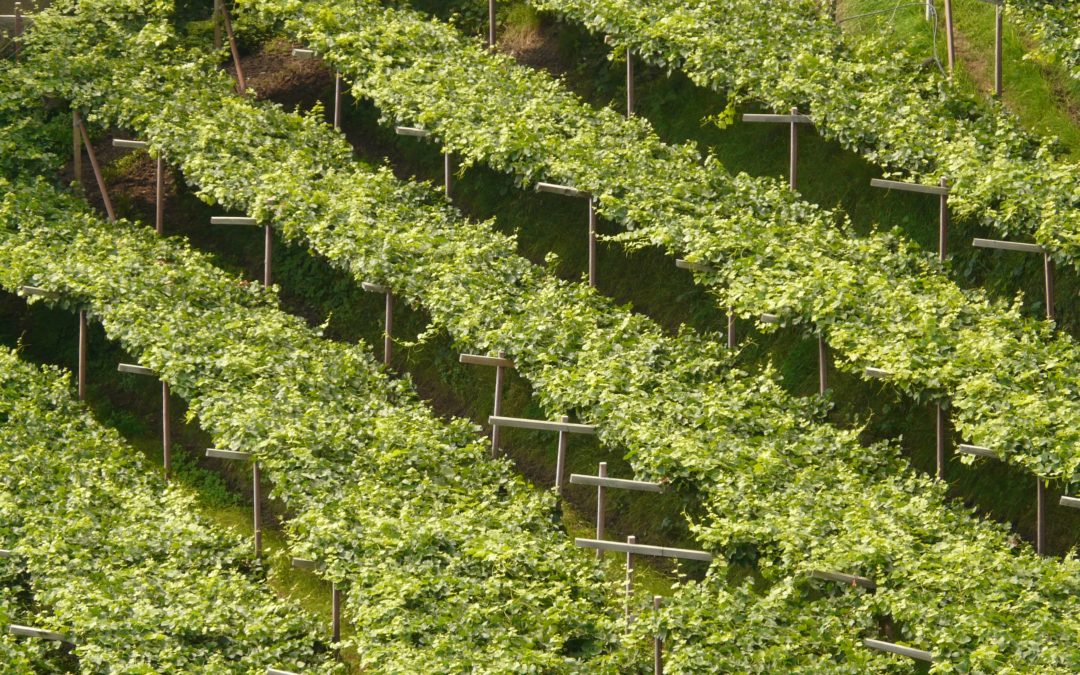
by Lorri | May 30, 2018 | UnCorked
Sangiovese, nebbiolo, barbera and dolcetto are varietals sometimes referred to as the “Italian Mob of wine.” They earned this reputation because of their dominance in the Italian wine industry. You may sometimes find these grapes listed on labels but many times they are identified only by region.
Most may be familiar with sangiovese as the main blending grape in mass-produced Chianti in its iconic fiasco, as the basket-wrapped bottle is known in Italian.
In the past these grapes were grown haphazardly in random vineyards or for a large-scale production with cooperatives. Today, many Italian producers have placed emphasis on growing sangiovese with care, making it brilliantly concentrated with spiced plum, black cherry and an integrated spice. Simply said — a beautiful wine.
Nebbiolo, the famous grape behind Barolo wine, is grown in Italy’s northwest region of Piedmont. When compared to other grapes in this lineup, it is by far the most renowned for making aggressive, highly tannic red wines with alluring aromas and flavors — floral, roasted meats and spice.
Barbera is similar to nebbiolo with less assertive tannins. Many of us love this grape because of its refreshing cherry and raspberry flavors. But as with the other grapes it can also be produced in a serious full-bodied style.
Dolcetto is unlike the others in this lineup of Italian grapes. It generally does not have the potential to age as well as the others. Its light tannin and mellow body makes it uncomplicated compared to sangiovese, barbera and nebbiolo. This is a wine to enjoy for its simplicity and refreshing berry flavors.
THE VALUE
- 2016 Da Vinci Chianti DOCG, Italy (about $12 retail)
THE SPLURGE
- 2016 Banfi Chianti Classico, Italy (about $18 retail)
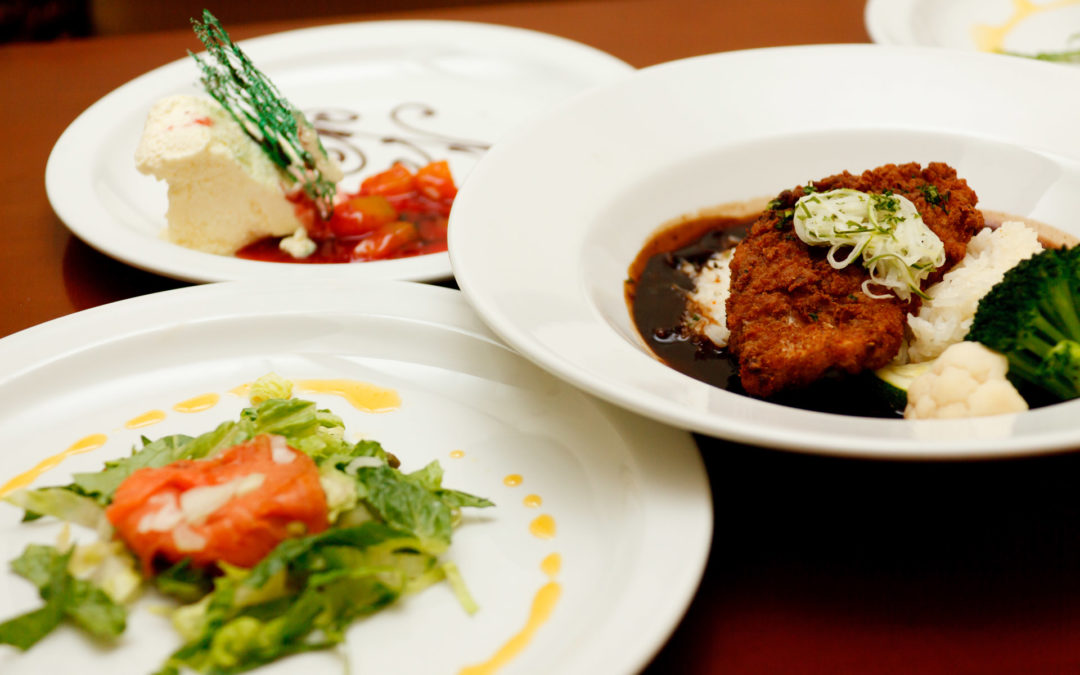
by Lorri | May 23, 2018 | UnCorked
One of my favorite opportunities is teaching others about wine. In the past few weeks our wine and food pairing classes have given me reason to revisit some common dilemmas people seem to have when choosing a food and wine combination.
Despite what some think, we generally don’t need to fuss over what wine to serve with a certain food. This can be one of the most trouble-free parts of a dining experience. There’s no need to mix, heat, bake, chop or even select a serving piece. There’s no preparation time or even cleanup. All you need to do is pull the cork, pour a glass and enjoy.
It should be reassuring to know there are very few such parings that create catastrophic and unpalatable mistakes. And even those few foods traditionally considered difficult to serve with wine can be easily adjusted to find a winning match. Here are a few:
- Runny egg yolks — When I wrote a column about this 10 years ago I did not consider pairing wine with a runny egg yolk to be a common dilemma. But, with many cooks adding egg-topped dishes to their menus it has become a common question. Just yolk and wine on their own will likely be an unpalatable match. The coating of runny egg yolk on the palate paired with the wine’s acidity and tannins is disastrous. It’s the other flavors of the dish that will make this pairing work. Consider a sparkling wine or light-bodied white wine.
- Artichokes — The old rules tell us this vegetable has no place with wine. The culprit is a substance in artichokes called cyanine that can make wine taste sweet or metallic. You can overcome this by dressing the artichoke with either lemon vinaigrette or squeezing fresh lemon juice over the top. This allows one to match the vegetable with either a rustic earthy white or a young crisp white. Avoid red wines, which can bring out a strong metallic taste in the artichoke.
- Vinegar — The smell and taste of vinegar in wine is considered a fault so one would not want to enhance that flavor. If vinegar is mixed with olive oil, it will not have much of a conflict with the wine.
- Oily Fish — Oily fishes such as smoked and nonsmoked mackerel are not off limits for wines but need to be paired with fairly neutral white wines. These wines do not compete with the oily texture and flavor of the fish.
THE VALUE
- 2017 Ecco Domani Pinot Grigio, Italy (about $12 retail)
THE SPLURGE
- 2016 A to Z Pinot Gris, Oregon (about $17 retail)
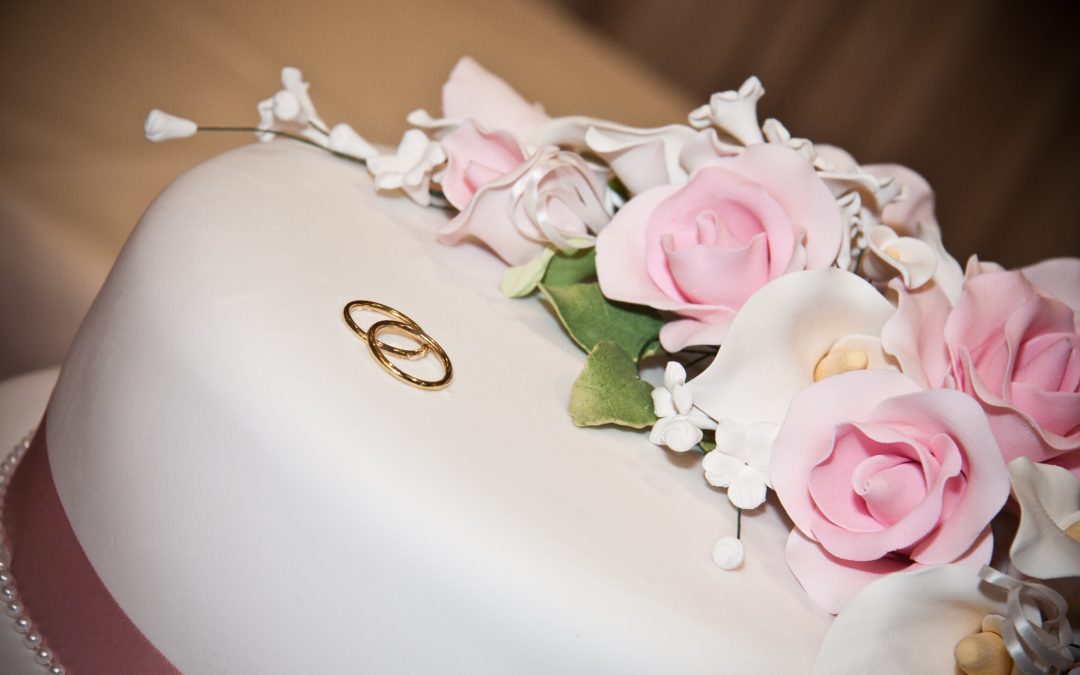
by Lorri | May 16, 2018 | UnCorked
It’s the time of year when mailboxes are filling up with invitations to weddings to be held in the coming months. I always find buying the ideal gift for our bride and groom confusing, what with all the choices.
The intention is genuine and we want to buy a unique gift that will be appreciated or treasured for years to come.
For me, the dilemma often comes as I look over the gift registry printout debating the blender, the fondue set or the stainless-steel popcorn popper. It’s not that the newlywed couple would not truly appreciate one of these additions to their household, after all they are asking for them. But I want my gift to be special, so why not share my passion for wine in a unique and commemorative way?
Wine and wine accessories can be perfect wedding gifts and a thoughtful gesture.
The bride and groom will enjoy it during a quiet, reflective moment.
The following are ideas that will add a personal touch to your gift:
- Personalized wine boxes — I love this gift because it is a novel way to package and wrap wine bottles. The Wine for a Wedding boxes are made by Artificer Woodworks. Each box features a custom engraved design with “open on” anniversary instructions for each compartment. As the couple reaches the anniversary they open a bottle of wine along with a personal message engraved on the inside lid of the box. The site guides you with ideas on design and fun or sentimental quotes. It’s as simple as selecting your box, adding the personal message and shipping address. As for selecting wines for each compartment, your local wine shop can help select the right wines for each anniversary. For more information, visit arkansasonline.com/0516boxes
- Write an inspiring message — Buy any large-format bottle of wine and have friends or family write a personal message to the couple. Wine bottle markers come in an array of colors but the metallic silver and gold stand out the best. They are usually under $10 and can be found in most craft stores.
- Personalized Wine Labels — A fun and unique gift for the bride and groom also can be used for wedding favors. You can select from hundreds of designs and ideas or create your own by adding a favorite photo. Most of the companies I researched do not charge a design fee and allow you to order as little as one label. The price from most companies ranged from 50 cents to a dollar.





